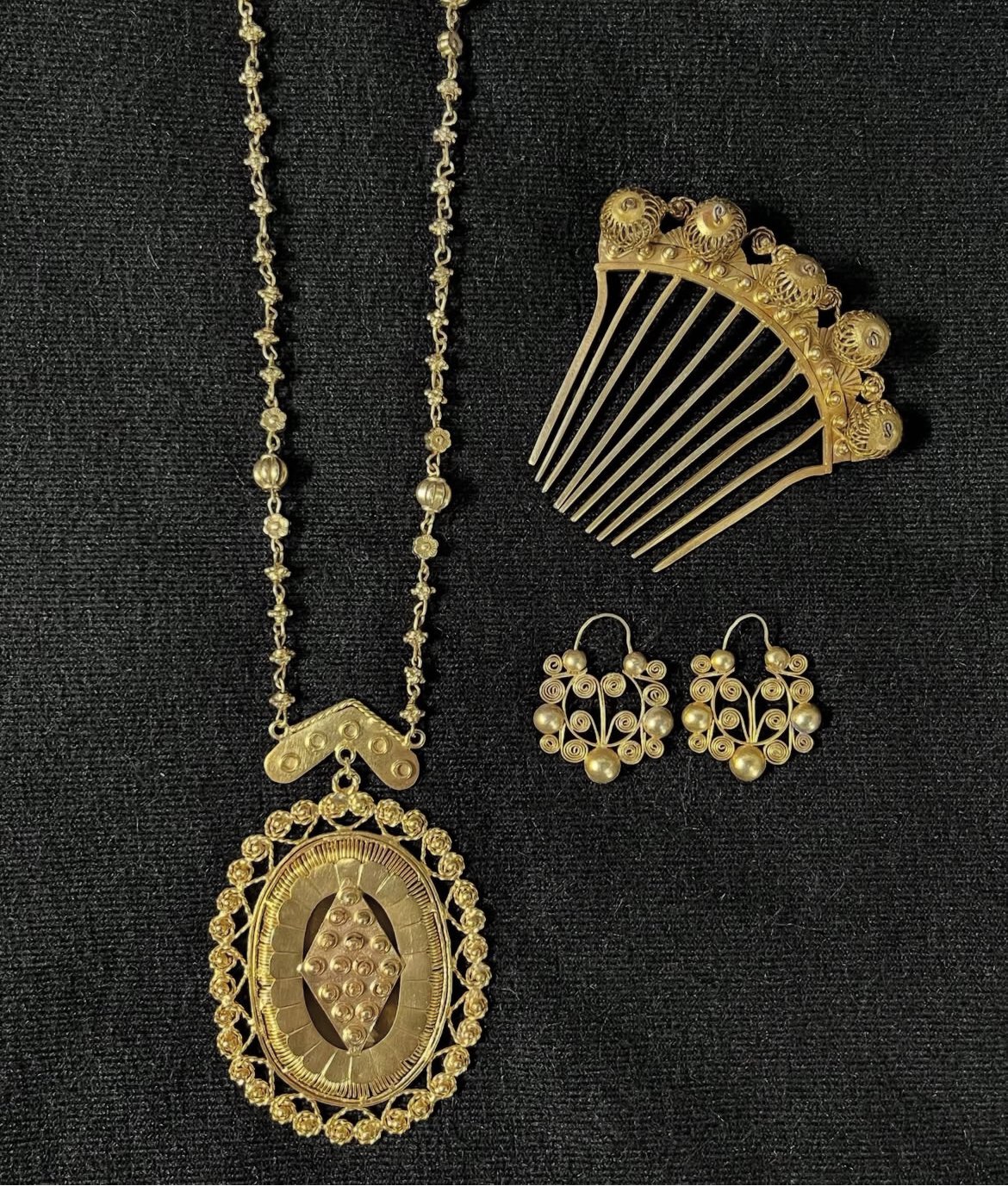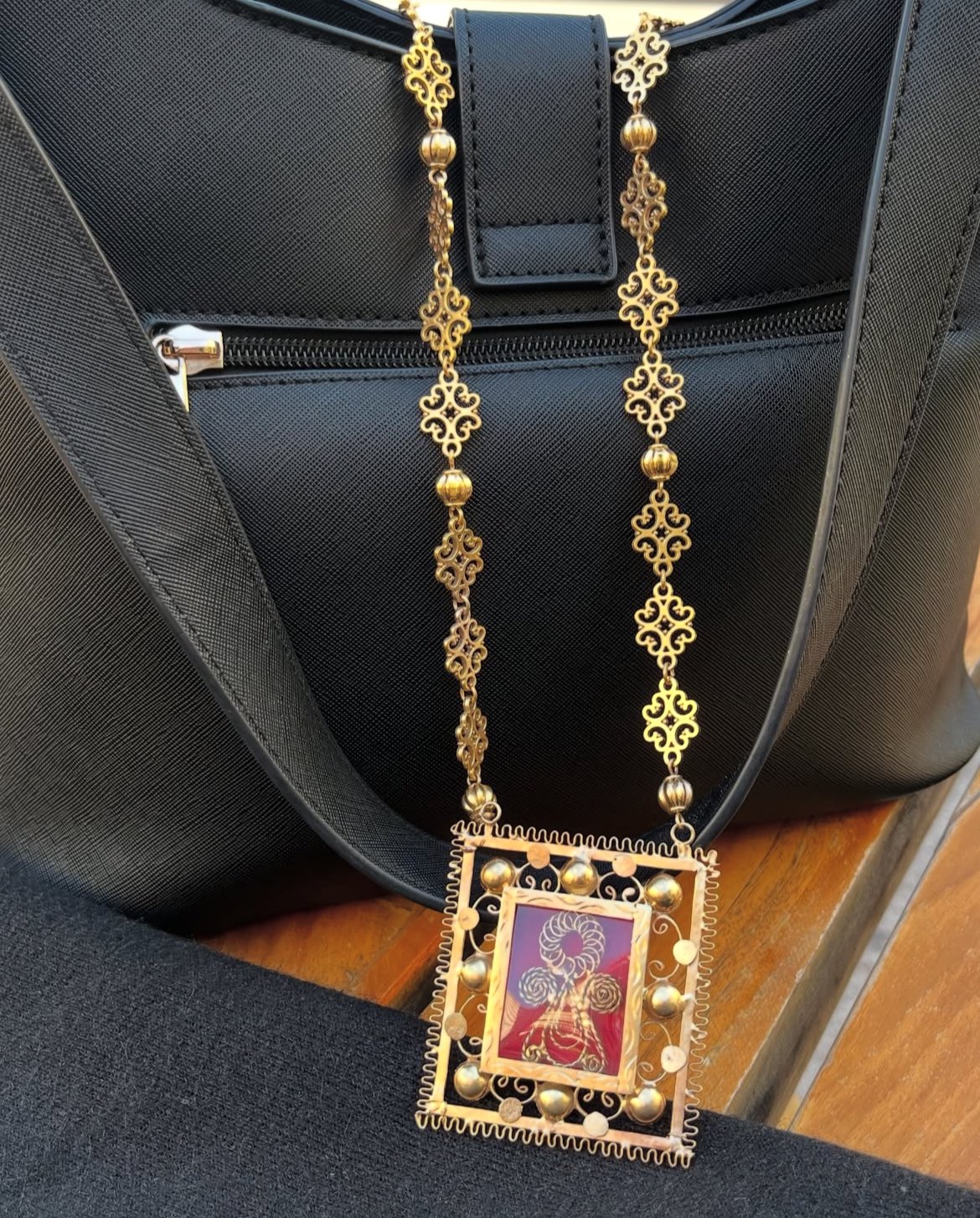The Forgotten Filipino Craft
Co-founder of Signorile and Co. shares their advocacy of preserving the tradition of Philippine tambourine jewelry.
Words Patricia Angela Moslares
Photos Signorile and Co.
April 20, 2025
Ash Pangcatan and Gabriel Dupaya founded Signorile and Co. in 2022 as a freshwater jewelry brand. A year later, they discovered tambourine jewelry through an artisan from Ash’s hometown in Mindanao, once part of a group of goldsmiths specializing in the craft. As the tradition faded, the artisan remained the last of their kind, inspiring the couple to carry it forward.
Tambourine Jewelry
Tambourine jewelry is a type of filigree made from thin gold wires, expertly twisted and woven into intricate patterns. According to Ramon Villegas, the term “tambourine” comes from tambour—a frame used to guide the wirework’s delicate looping and twisting.
Gold filigree existed long before Spanish colonization, but its design evolved with the times. During the colonial period, it took on rosary-like forms to support the spread of Christianity. By the 19th century, however, it became more ornamental, with religious motifs giving way to natural elements.
Why do we not know about it?
Once they learned about tambourine jewelry, the owners of Signorile were fascinated and began researching more about the craft, only to be disappointed by how little information was available online. Gabriel was even more troubled when he realized he had never learned about tambourine jewelry in school. He remarked, “Even in universities that possess a high level of awareness when it comes to Philippine history, the tambourine wasn’t even mentioned once.”
Driven to revive conversations around overlooked cultural topics, the brand began creating content about Filipino history and heritage on social media. With striking headlines like “Is This the Last Generation to Wear Tambourine Jewelry?” and “Why Filipinos Look Down on Their Own Culture,” they successfully drew in younger audiences. But their bold messaging goes beyond just gaining attention. Gabriel emphasized their commitment to truth, believing misinformation would defeat their purpose.
“We’re not just talking about jewelry or culture, we’re also talking about the history and the heritage that is attached to what we are selling. Our focus is not just to sell our products but also to inform people why this matters,” Gabriel said.
Process of creation
Gabriel admitted that running a tambourine jewelry business is anything but easy. In a fast-paced world driven by instant gratification, he shared that interest often fades once people learn that each piece takes weeks to make. Some customers request their jewelry in just a few days, but the intricacy of tambourine work requires time, especially from artisans who are mostly elderly. Despite hands scratched by wires and swollen from arthritis, they continue to craft each piece with care, preserving a tradition that only human hands can create.
The jewelry can be customized in pure silver, pure gold, brass, and other materials. Customers share sketches or inspiration, and the artisans shape the chosen material by hand, finishing each piece with a gold dip. Signorile honors the craft by ensuring artisans are fairly compensated, allowing them to set their own prices. What began with one artisan from Mindanao has now grown into a network of craftsmen from Ilocos, Pampanga, and Mindanao.
Ruminations on the future
For Signorile and Co., making money takes a backseat to their mission of fostering appreciation for tambourine jewelry and Filipino culture. This advocacy is the driving force behind their brand. Gabriel expressed, “We cannot say that we are really successful when it comes to monetary purposes or something like that. But when it comes to influence and the inner purpose of what we're doing, I think we're more than grateful for what we achieved.”
Just five months ago, they had only 500 followers on TikTok. Today, they’re just a thousand shy of hitting 10,000. On Instagram, they reached 1.5 million views in the past month alone. For Gabriel, this proved that the problem isn’t that people have forgotten their culture—it’s that they were never truly taught about it.
Looking ahead, he hopes to collaborate with more brands that champion local craftsmanship and help share their advocacy on a larger platform. Through their work, Signorile and Co. strive to preserve a vital part of Filipino heritage—not just for this generation, but for generations to come.





